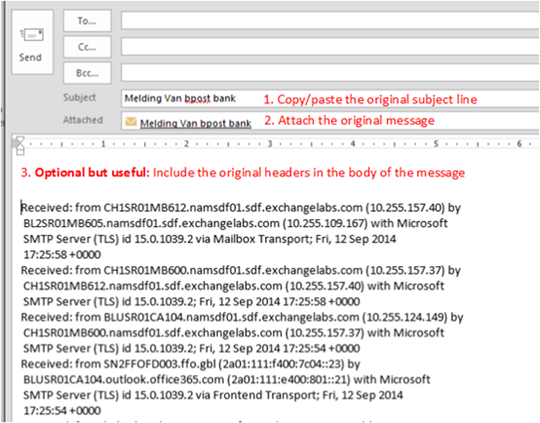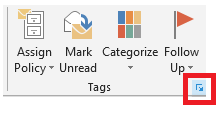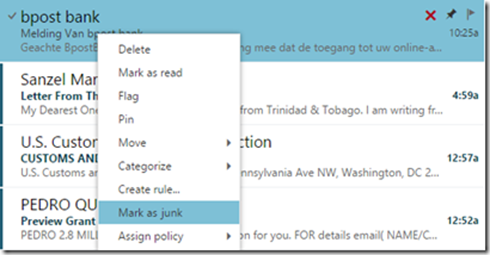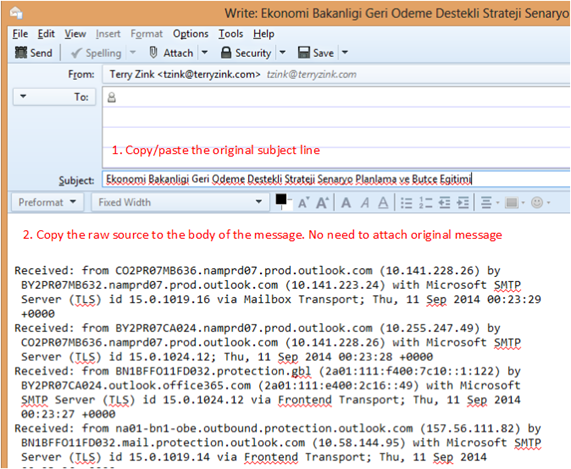Submitting spam back to Office 365
Office 365 (Exchange Online Protection) regularly asks customers to submit spam samples back so that we can improve the service. This information is also available here:
Submitting spam and non-spam messages to Microsoft for analysis
https://technet.microsoft.com/en-us/library/jj200769(v=exchg.150).aspx
This blog post is a visual step-by-step guide on how to submit spam back to Office 365 using a variety of methods.
If using Outlook 2007, 2010, or 2013, use the Outlook Junk Reporting Plug-in.
This is available here:
https://www.microsoft.com/en-us/download/details.aspx?id=18275.This is a one-click solution, once it’s installed you can right-click and pick “Mark as spam” and the message comes back to Office 365 in the correct format.
OR, if using Outlook Web Access, right click and mark as junk.
These samples flow back to Office 365 automatically.
OR, if using Outlook but can’t install the Junk Reporting Plug-in, forward the message as an attachment to the abuse submission alias junk at office365.microsoft.com (replace the “ at ” with an @ symbol).

It is not required to manually include the message headers but I always do it. Sometimes, depending on your version of Outlook and Exchange, headers get removed from the email attachment. Copy/pasting the original headers guarantees that they will be preserved.
We need the original headers!
To view the message headers in Outlook 2010 and 2013, double-click on the message to open it. Click on the little arrow in the bottom by the Tags piece of the ribbon:

The Internet headers are at the bottom of the Properties dialog window:OR, if using other email clients, copy/paste the raw source into a message and send to the same email alias.
Using Thunderbird, press Ctrl + U to get the raw message source. Copy/paste that into a new message, there is no need to attach the original.
These are the methods users should use to send spam directly to Office 365. Some customers have internal submission mechanisms not outlined here which are fine so long as we receive the original message headers and body. Submissions that do not resemble the original are not useful because the original information is how we diagnose why a message was, or was not, marked as spam.
Thanks for helping us stop spam.


